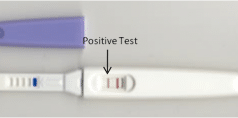
According to the latest CDC report, almost four in 10 US adults have obesity. If we count in being overweight, that number goes up to an astonishing 71.6%, or nearly three in four adults.
Unfortunately, being overweight or obese is more than an “aesthetic” concern. For instance, being 22 pounds overweight can already raise a person’s risk for stroke by 24%. On top of that is the 12% increased risk for coronary heart disease.
With that said, it may be time to reset your metabolism if your bathroom scale reading has been going up. Your weight issues may have to do with your body storing more fat than it actually uses.
Ready to learn all about the whats, whys, and hows of resetting your metabolism? Then let’s dive right into it!
What Is Metabolism?
Metabolism refers to a wide array of chemical reactions in the body. These are the processes that cells undergo to convert the food you eat into energy sources. These “supplies” then go into powering your body to do what you need it to, from breathing to thinking.
With that said, metabolism is an essential process that keeps your body working right. Without it, you’ll have no energy to breathe, much less perform physical activities.
Keep in mind that the body is in a constant state of some form of metabolism. That’s because the simple act of breathing itself, which you do 24/7/365, requires energy. Breathing, in fact, is one of the activities that affect your basal metabolic rate (BMR).
BMR is the number of calories that the body needs to expend for life-sustaining functions. Aside from breathing, such activities include circulation, cell production, and nutrient processing.
What Can Impair Metabolism?
It’s natural for metabolism to decline with age, with a decrease of 1% to 2% per decade after the 20th life year. Meaning, by the time that you hit your 50s, your metabolic rate could be anywhere from 3% to 6% slower due to age.
However, many other factors can impair metabolisms, such as muscle mass and genetics. Women also appear to have a slower metabolic rate, as well as a fat mass of 6% to 11% higher than men. This is also why, in most cases, men have an easier time shedding weight than women.
Physical activity, or lack of it, can also influence your body’s metabolism. After all, being active makes your body require more power, so it has to keep converting food into energy. Too little activity, on the other hand, makes you expend fewer calories, which in turn, gets stored as fat.
There are also certain medications, like antidepressants, that can impede metabolism. Some types of antipsychotics for schizophrenia and heart rate have a similar effect.
Finally, there’s metabolic syndrome, estimated to affect one in three adults in the US. It’s a term that refers to co-occurring conditions that have an impact on metabolism. These include elevated levels of blood pressure, blood glucose, cholesterol, and belly fat.
Why Would You Want to Reset Your Metabolism?
Many people who quickly gain weight or find it hard to shed pounds tend to blame their metabolism. While it does play a part in weight gain/loss issues, it’s not because of a “slow” metabolic rate. These problems are more likely due to activities that impair metabolism.
Either way, it’s vital to learn how to reset your metabolism, not only because of its impact on your weight. More than that, an unhealthy metabolic rate can give rise to more severe health problems.
For starters, impaired metabolism may make you more prone to excess fat storage. When this happens, your risks for developing obesity goes up. Obesity, in turn, can wreak even more havoc to your metabolism, further affecting its speed.
Worse, obesity can make you more susceptible to other chronic conditions like diabetes. Diabetes is another ailment that affects metabolism. Worse, scientists have found links between obesity, diabetes, hypertension, and heart disease.
At the very least, problems with metabolism can make you feel tired all the time. Scientists even link metabolic problems with a condition called “Chronic Fatigue Syndrome.” As if feeling exhausted isn’t bad enough, CFS symptoms also come with pain and sensitivity.
All these should be enough reasons to want to boost or reset your body’s metabolism. At the very least, a healthy metabolic rate will let your body maintain homeostasis. From here, you may find it easier to shed off excess pounds and keep your weight at a healthy range.
So, How Do You Go About Resetting Your Metabolism?
The first step on how to reset your metabolism is to first find out what your metabolic rate is. Clinical metabolic tests can accurately measure the rate of your metabolism. For instance, a resting metabolic rate (RMR) test measures calorie expenditure during rest.
Note that there’s a slight difference between RMR and BMR. As mentioned above, BMR refers to how much calories your body needs to sustain itself. RMR, on the other hand, is the number of calories the body burns while it’s resting.
With that said, an RMR test can give you an accurate BMR estimate.
When you know what your RMR/BMR is, you can account for the calories you burn with your daily activities. You should also compare the test results with how many calories you consume and then expend each day. Your weight woes are more likely due to a calorie intake higher than calorie expenditure.
Once you have all these crucial details, you can now curate a plan to boost or reset your metabolism. Here are some of the most critical components to include in your program.
Pick Up the Pace
Aerobic exercises are physical activities that boost your breathing and heart rate. Some call these “cardio” workouts, which is fine, but even just brisk walking can already do the trick. Cycling, running, swimming, and jogging are all types of aerobic exercises.
Doing more of these activities is the best way to reset your metabolism. After all, when there’s a spike in breathing and heart rate, your body requires more oxygen. To ensure that you get enough oxygen, your body responds by boosting circulation.
All these “increases” require the use of energy, which in turn, kicks off your metabolism. In addition, these are exercises that you perform for a sustained length of time. That means that your elevated metabolic processes also occur in longer bouts.
You have two options when it comes to completing aerobic exercises. First, you can aim to get in at least 75 minutes of vigorous aerobic exercises every week. You can also go moderate, but make sure that you double the time to at least 150 minutes.
Increase Your Muscle Mass
The more muscles you have, the more calories your body expends. That’s because each muscle requires energy, even while you’re only resting.
You don’t have to go all bulky, since even just an extra pound of muscle can already burn away six calories a day, at rest. Of course, more intense activities will also boost their energy expenditure.
To kickstart your metabolism reset plan, start with muscle-strengthening exercises. These include high-intensity workouts that work all the major groups of muscles. Lifting weights and even some serious gardening tasks are a couple of examples.
Talk to Your Doctor About Taking Medication
If you have symptoms of metabolic syndrome, some types of medications can help. This is especially true if the lifestyle changes you’ve made have negligible results. Depending on your condition, your doctor can help by prescribing appropriate medicines.
One example is the compound called Stenabolic SR-9009. Umbrella Labs, a supplier of therapeutic compounds for research, says that this drug has shown to treat metabolic syndrome. It appears to trigger a rapid increase in the users’ metabolic rate.
Other in-vitro studies demonstrated similar therapeutic effects of SR-9009 on metabolic disorders. Moreover, the use of the compound has even led to a decrease in the fat mass of studied participants.
Other common medications used to help ease metabolic syndrome are anti-hypertensives. These often include ACE inhibitors, beta-blockers, and diuretics.
Cholesterol medicines, such as statins, niacin, and bile acid resins, may also help. If you have symptoms of glucose intolerance, your doctor may prescribe diabetes medications. These may include drugs like metformin and pioglitazone.
Time for a Welcome Change
There you have it, your beginner’s guide on how to reset your metabolism and bring it to a healthier level. As you can see, a few lifestyle changes, such as moving more, can already kickstart your metabolic rate. Just don’t forget to pay attention to how much (and what) you eat, as you want to expend more energy than what you consume.
Ready for more health guides and life pro-tips like this? Then please feel free to check out the rest of our posts here.








